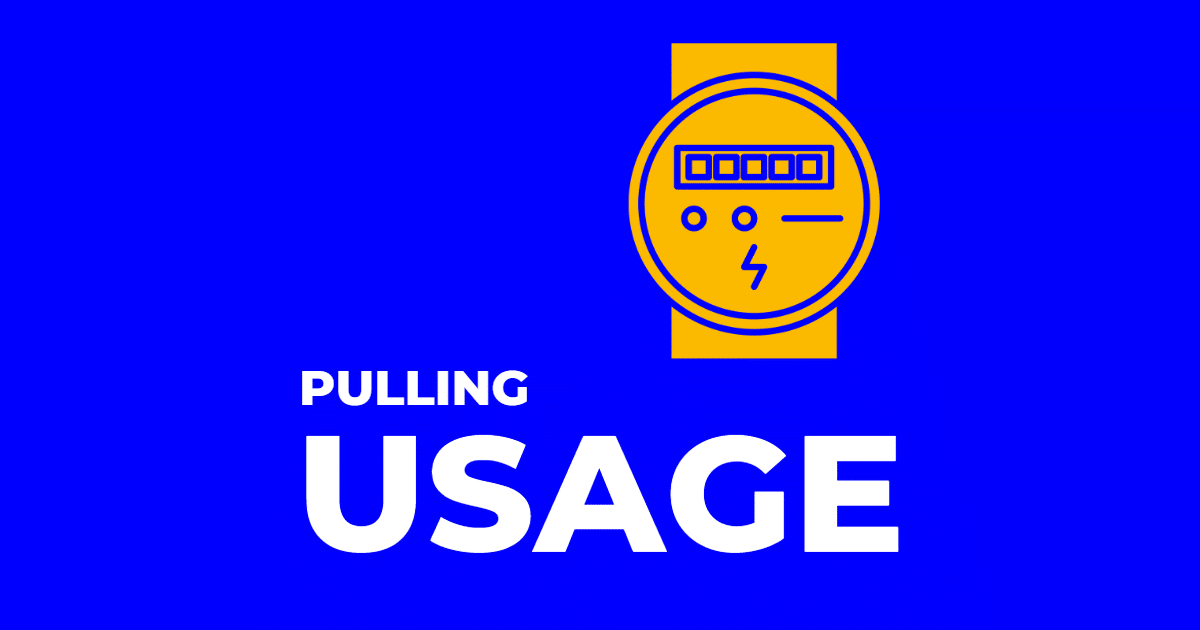Understanding Solar Customer Usage and Rate Plans
Welcome to Supreme Solar’s blog! In today’s post, we’ll delve into the crucial aspects of customer usage and rate plans, empowering you with the knowledge needed to make informed decisions about solar energy solutions. By understanding how to obtain customer usage data and decipher rate plans offered by utility companies, you can confidently recommend the most suitable solar solutions to your valued customers. Let’s dive in!
Methods to Obtain Customer Usage
Solar energy is the clean, renewable energy derived from sunlight. At the heart of solar energy systems are solar panels installed on the roof or in open spaces that absorb sunlight and convert it into usable electricity. Here’s a breakdown of how solar systems operate:
- Pooling usage data from the utility company: The most reliable method is contacting the utility company’s hotline, providing them with the necessary details such as the account number and the account holder’s information. Requesting 12 months of usage data for a specific home or meter will provide a comprehensive overview of their energy consumption.
- Using the bar graph on the customer’s bill: A customer’s bill often contains a bar graph displaying their monthly usage. Dark numbers represent electricity usage, while light numbers represent gas usage. By estimating the usage for each month, converting it into dollar amounts, and calculating the total usage, you can obtain a reasonable approximation of their energy consumption.
- Load calculation for homes without usage data: In cases where a customer doesn’t have a bill or is unable to provide usage data, a load calculation can be employed. Take a picture of all the breakers in their electrical panel and factor in 240 volt loads, 120 volt loads, and specific appliances to estimate their energy usage. Consider variables such as square footage, AC usage, and the presence of appliances like electric vehicles, ovens, dryers, etc.
- Bullseye method for estimating usage without a bill: If usage data isn’t available or the customer is unwilling to provide it, the bullseye method can be used as an estimation technique. Ask the customer for their highest and lowest bills (summer and winter), calculate the average, and extrapolate it to estimate their 12-month usage. Bear in mind that customers may provide slightly inflated numbers, so verifying accuracy later is advisable.
Understanding Rate Plans
Familiarizing yourself with the various rate plans offered by utility companies is crucial in determining the most cost-effective solar solution for your customers. Here are some common rate plans to be aware of:
- Tier System: Many utility companies employ a tier system, which involves dividing energy usage into three tiers, each with a different cost per kilowatt-hour (kWh). Tier one typically has the lowest cost, while tier three has the highest. Customers are allocated a baseline allowance in tier one, and exceeding this allowance moves them to higher tiers, resulting in increased costs. Understanding the tiers and associated costs is essential for assessing potential savings through solar energy.
- Time of Use Rate Plan: Time of Use (TOU) rate plans charge different rates based on the time of day electricity is consumed. Peak times, usually between 4 PM and 9 PM, have higher rates, while usage during off-peak times incurs lower costs. With solar energy, strategically timed usage and the ability to store excess energy can help customers maximize savings by utilizing electricity during off-peak hours.
- Care Program and Baseline Allowance: Many utility companies, such as PGE, offer a Care Program designed to support eligible low-income customers. Participants in this program receive a 30% reduction in their entire electricity cost. Care program participants also benefit from a lower cost per kilowatt-hour, enabling them to save significantly on their utility bills. Additionally, customers on the Care Program receive a larger baseline allowance, allowing for greater solar savings.
Benefits of Solar Energy in Relation to Rate Plans
Now that we’ve explored customer usage and rate plans, let’s discuss the benefits of solar energy and how it can help customers optimize their savings:
- Energy Independence: By installing solar panels, customers can generate their own electricity, reducing their reliance on the grid. This empowers them to control their energy production and minimize exposure to fluctuating utility rates.
- Reduced Energy Costs: Solar energy allows customers to offset a significant portion of their electricity consumption, resulting in reduced utility bills. With careful consideration of the customer’s usage patterns and rate plans, solar installations can be optimized to maximize savings and achieve a faster return on investment.
- Protection Against Rate Increases: Utility rates tend to rise over time due to inflation and increased demand. By going solar, customers can protect themselves from these rate hikes and lock in a predictable energy cost for the lifespan of their solar system.
- Environmental Benefits: Solar energy is clean, and renewable, and helps combat climate change by reducing carbon emissions. By embracing solar power, customers contribute to a more sustainable future for themselves and future generations.
Conclusion
Understanding customer usage and rate plans is vital for Supreme Solar’s team to provide the best solar solutions to our valued customers. By employing effective methods to obtain usage data and comprehending the intricacies of rate plans, we can accurately assess their energy needs and propose solar installations that optimize savings. Remember, solar energy offers benefits such as energy independence, reduced costs, protection against rate increases, and environmental sustainability.





